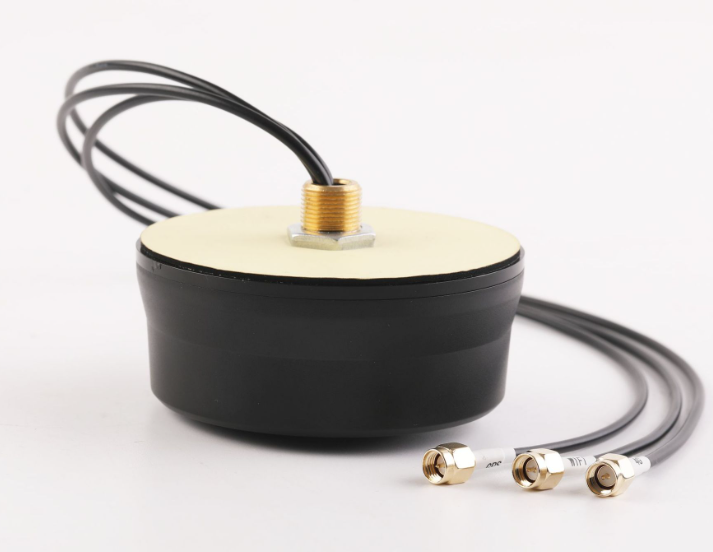Installation of gps antenna
With the popularization of Global Positioning system (GPS) technology, GPS antenna is more and more widely used in various fields, from automobile navigation to logistics tracking, from UAV flight to scientific research detection, GPS antenna plays a vital role. In order to improve the positioning accuracy and communication quality of GPS equipment, the installation of GPS antenna has become an important link. In this paper, the functions and application scenarios of GPS antenna, as well as the steps and matters needing attention of installing GPS antenna are introduced in detail.

Basic functions and Application scenarios of GPS Antenna
1. Basic functions of GPS antenna.
GPS antenna is a key component of GPS equipment to receive signals. Its main function is to convert satellite signals into electrical signals that can be identified by the equipment, so as to achieve positioning, navigation, communication and other functions. The performance of GPS antenna directly affects the positioning accuracy and communication quality of GPS equipment.
2. Application scenarios of GPS antennas
(1) vehicle navigation: by adding GPS antenna, the vehicle navigation system can locate the vehicle position in real time and provide accurate navigation information for the driver.
(2) Logistics tracking: after the logistics vehicle is equipped with GPS antenna, it can realize the functions of real-time monitoring and trajectory recording, and improve the logistics efficiency.
(3) UAV flight: the UAV is positioned through the GPS antenna to achieve accurate flight and automatic return.
(4) Scientific research exploration: in the fields of geological exploration and meteorological observation, GPS antennas are used to receive satellite signals and provide data support for scientific research work.
Steps to install a GPS antenna
1. Choose the appropriate GPS antenna.
Before installing the GPS antenna, we need to select the appropriate GPS antenna according to the actual requirements, and consider the type, size, performance and other factors of the antenna to ensure that the selected antenna can meet the positioning requirements and communication quality requirements of the equipment.
2. Choose and purchase supporting accessories
According to the type and installation requirements of GPS antenna, choose and purchase corresponding cables, connectors, fixtures and other accessories.
3. Determine the installation location
Choosing a suitable installation position is the key to ensure the signal quality of the GPS antenna. We should try our best to choose an open and unobstructed place to avoid large buildings or metal objects nearby blocking the signal.
4. Install GPS antenna
According to the installation instructions of the optional accessories and antennas, secure the GPS antenna to the selected position to ensure that the antenna is securely installed and the cable is well connected.
5. Testing and debugging
After the installation is completed, test and debug to ensure that the GPS antenna works properly, check the positioning accuracy and communication quality of the equipment, and adjust the position and angle of the antenna if necessary.
Matters needing attention in installing GPS antenna
1. Choose a high-quality antenna
When choosing and purchasing GPS antennas, we should choose products with reliable quality and stable performance, and avoid buying inferior or fake products, so as not to affect the positioning accuracy and communication quality.
2. Follow the installation specifications
When installing the GPS antenna, you should follow the relevant installation specifications and requirements to ensure that the antenna is installed firmly and the cable is connected correctly.
3. Pay attention to the maintenance of the antenna
In the process of use, attention should be paid to the maintenance of the antenna to avoid impact, pollution or corrosion of the antenna, so as not to affect the quality of signal reception.
4. Pay attention to the surrounding environment
When installing the antenna, we should pay attention to the changes of the surrounding environment, such as the emergence of new buildings or obstacles nearby, which may affect the signal reception quality, and the position and angle of the antenna should be adjusted in time.
5. Check and update regularly
Regularly check the performance and use of GPS antennas, and timely replace or upgrade equipment if necessary.
The installation of GPS antenna is a key step to improve the positioning accuracy and communication quality of GPS equipment. In the process of selection, installation, use and maintenance, we should pay attention to selecting a suitable GPS antenna, following the installation specifications, paying attention to the changes of the surrounding environment, regular inspection and update, etc., by installing high-quality GPS antenna, we can achieve more accurate positioning, more stable communication, and provide strong support for applications in various fields.





